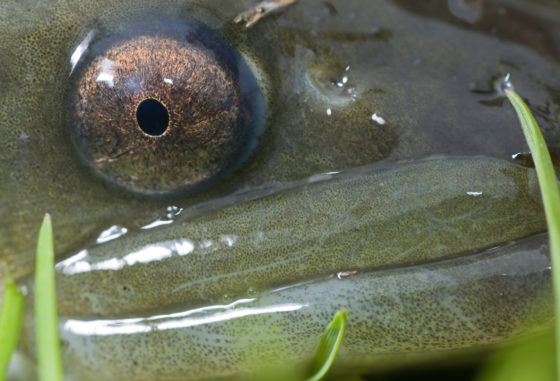
The European eel has been in decline for decades and is on the IUCN Red list as Critically Endangered. Despite this, a wide-spread commercial and recreational fishery is allowed to continue in the EU. In 2017, a Joint Declaration to aid its recovery was adopted, including national three-month fishing closures to protect eel migration. Our report shows that many Member States are more likely to protect their fishing sector than the eels.
Despite decades of decline, the critically endangered European eel is still the target of both commercial and recreational fishing in most EU Member States. In 2017, the Commission proposed to close all fishing for eel longer than 12 cm in EU waters, in line with scientific advice. The EU Member States rejected this proposal. Instead, the three-month closures were part of a political compromise agreement – a Joint Declaration for eel recovery.
Since the last December Council, coastal EU Member States have yet again decided on three months during which all eel fisheries will be closed in the coming fishing season. The plans for all of the closures in 2021/2022 should now have been reported to the European Commission.
In our new report, FishSec has assessed whether the current national eel fishing closures – for the 2020/2021 fishing season – complied with the legal requirements, as well as the intent to protect eel migration. Sadly, we found that while the majority of the coastal EU Member States are in compliance with the legal requirements of closing their eel fisheries for three consecutive months, only a few countries fulfil the intent to protect the mature silver eels that are on their way to the Sargasso Sea to reproduce.
— The closures were intended to protect eels during their most vulnerable life stages by reducing the fishing effort during migration, but have not stopped several countries from actually increasing their catches since they were first implemented in 2018, says Elena Tamarit Castro, co-author of the report. In many countries there is little or no overlap with the main migration period, and the targeting of mature individuals on their way to the spawning grounds after spending 10–20 years in European waters continues.
FishSec also discovered that several countries, including Denmark, Sweden[1], Italy and the Netherlands, allow landings and/or sales to take place during the closed period, after keeping eels alive in submerged storage containers or land-based tanks, a practice that makes control and enforcement of the ban an even greater challenge.
Considering its conservation status and the recurring scientific advice from the International Council for Exploration of the Sea (ICES) to reduce all anthropogenic mortality to as close to zero as possible[2], the continued widespread targeting of European eel is really unacceptable. The population is below any conceivable biological reference points, and continued fishing is therefore also a breach of the Common Fisheries Policy objectives, and goes against the aim of the EU Biodiversity Strategy to protect biodiversity and sensitive species.
— Even with closures perfectly aligned with peak migration, this conservation measure is less effective and more difficult to control than a full protection of this endangered species that was once so common across Europe, says Niki Sporrong, Senior Policy Officer and European eel Project Manager at FishSec.
Together with several other NGOs, FishSec calls on the Commission and the EU decision-makers to at least apply the same rules to European eel as to other fisheries – that the objectives of the Common Fisheries Policy (CFP) and the scientific advice are followed. The three-month ban was introduced to avoid a full closure, but has so far failed to deliver on the original intention. It is time for the Member States to rectify this and for the Commission to make sure it is implemented. If there are no improvements, the Commission must again propose a full prohibition to protect the eel.
[1]Sweden updated its legislation on 1 May 2021 to simplify control and enforcement, and landings are only allowed for up to 14 days after the start of the fishing closure.
[2]The ICES advice has been more or less the same since 2000 – for 20 years.
- Joint Declaration on strengthening the recovery for European eel (Commission and Member States)
- Council Regulation (EU) 2021/90 of 28 January 2021 fixing for 2021 the fishing opportunities for certain fish stocks and groups of fish stocks applicable in the Mediterranean and Black Seas
- Council Regulation (EU) 2021/92 of 28 January 2021 fixing for 2021 the fishing opportunities for certain fish stocks and groups of fish stocks, applicable in Union waters and, for Union fishing vessels, in certain non-Union waters
- EU common fisheries policy